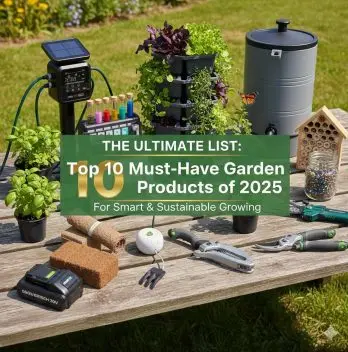Succulents are known for their ability to thrive in dry, warm conditions, but winter can present challenges even for these hardy plants. When the temperature drops, succulents require a different care routine to keep them healthy.
Understanding how to care for succulents in winter will help them survive the cold months and be ready to grow again in spring. Whether your succulents are indoors or outdoors, here are the essential steps to follow. Also, select winter hardy succulents to remain outside during the winter months.
Types of Cold-Hardy Succulents | Caring for Succulents in Winter (6 Succulents)
1. Bring Your Succulents Indoors
If you’re growing succulents outdoors, the first step to protect them in winter is to bring them inside before the temperature drops below 50°F (10°C). Most succulents are not frost-tolerant, and freezing temperatures can quickly damage or kill them. Choose a location inside that offers bright, indirect sunlight, such as a south-facing window.
Inspect the plants for pests before bringing them indoors. Look for small insects, like spider mites or mealybugs, that can hide in the leaves. Treat any infestations with insecticidal soap or neem oil to prevent pests from entering your home.

2. Reduce Watering
Watering is the most important aspect of how to care for succulents in winter. Succulents need far less water in their dormant state than during the growing season. Overwatering is a common mistake that leads to root rot. In winter, let the
When you do water, make sure to water deeply, allowing the water to drain out from the bottom of the pot. Succulents hate soggy
3. Provide Sufficient Light
Succulents need plenty of light, even during the winter months. Indoors, place your plants near a south-facing window to ensure they get about 6 hours of sunlight each day. However, winter sunlight is often less intense, so you may need to supplement with a grow light. Grow lights help mimic natural sunlight and can prevent your succulents from becoming leggy, which happens when they stretch out due to insufficient light.
There are many affordable grow lights available, some specifically designed for succulents and which provide a good way how to care for succulents in winter, which you can set on a timer for consistent light exposure. Be sure to place the grow light 6–12 inches above the plant to avoid burning the leaves.

4. Control Indoor Humidity
One often-overlooked factor in how to care for succulents in winter is humidity. Succulents prefer dry air, but the humidity level in homes can rise during winter, especially if you use humidifiers or live in a naturally humid area. High humidity can lead to mold or fungal growth, which is harmful to succulents. Keep your plants in a dry, well-ventilated area and away from humid rooms like bathrooms or kitchens.
However, don’t place them near heating vents either, as hot, dry air can cause the plants to lose moisture too quickly. Maintaining a balanced environment is key to keeping your succulents healthy.
5. Skip Fertilization
Fertilizing your succulents during winter is unnecessary, as they aren’t in their active growth phase. Feeding them during this time can actually harm them, as they won’t be able to use the extra nutrients. Hold off on fertilizing until spring, when your succulents will start to wake up and enter their growing season.
In spring, you can use a balanced, water-soluble fertilizer to give them a nutrient boost. Just be sure to dilute the fertilizer to half-strength, as succulents are sensitive to over-fertilization.
6. Protect Outdoor Succulents
If you have hardy succulents that can tolerate some cold, such as Sempervivums or Sedums, you can leave them outside, but they still need protection. Cover your outdoor succulents with frost cloths or old bedsheets when frost is expected. Mulching around the base of the plants can also provide insulation for the roots.
Move potted succulents to a sheltered location, like under a patio roof or inside a garage. This will keep them protected from freezing rain or snow, which can cause the
7. Watch for Pests
Indoor succulents are more prone to pest infestations during winter. Common pests include mealybugs, spider mites, and aphids. Check your succulents regularly for signs of pests, such as small webs or sticky residue on the leaves. If you notice an infestation, isolate the affected plant and treat it with insecticidal soap or neem oil.
Types of Cold-Hardy Succulents | Caring for Succulents in Winter (6 Succulents)
Conclusion
Knowing how to care for succulents in winter ensures that your plants will survive the colder months and continue to thrive in spring. Key steps include reducing watering, providing adequate light, and protecting outdoor succulents from frost. Avoid overwatering and fertilizing, and keep an eye out for pests. With these simple care tips, your succulents will remain healthy and vibrant all winter long.
For tools like grow lights, frost covers, and well-draining pots, check out our recommended succulent care products on Amazon. These tools can help make winter succulent care much easier.

Brian believes the best days are spent outside with soil on your hands. He finds his rhythm in the details of the garden—from carefully tending to established plants to the excitement of propagating new varieties. A true outdoor enthusiast, Brian is here to swap stories, share advice, and celebrate the rewarding work of growing.





